And: Recording of my 2021 new edition of George Bristow's Symphony No. 4, "Arcadian"
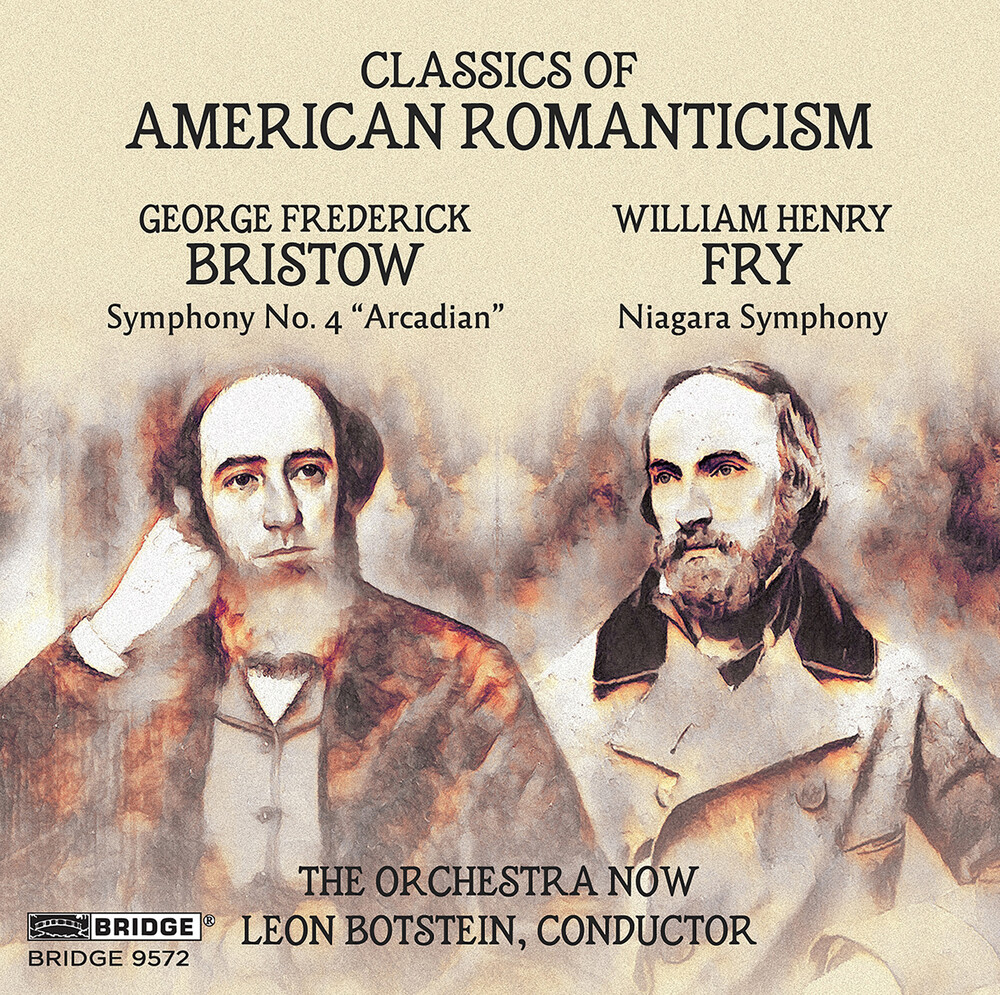
Classics of American
Romanticism
Leon Botstein
and The Orchestra Now
Bridge Records
Details and reviews below

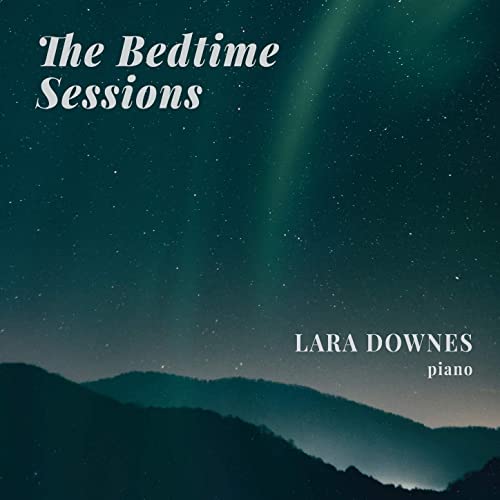
Going to Bed (Homage to Glass) (Flipside Music)
Contains Gann's Going to Bed (Homage to Glass) (2012), with pieces by Eve
Beglarian, Billy Joel, Florence Price, Paul Bowles, William Grant Still, Joe Hisaishi, Robert Schumann,
Fabian Andre and Wilbut Schwandt, Benny Golson, Federico Mompou, Vladimir Rebikov, Dana Seusse, Teresa
Carreno, Daniel Gilliam, Georges Delbruck, Alexander Ilyinski, and Harry Farjeon
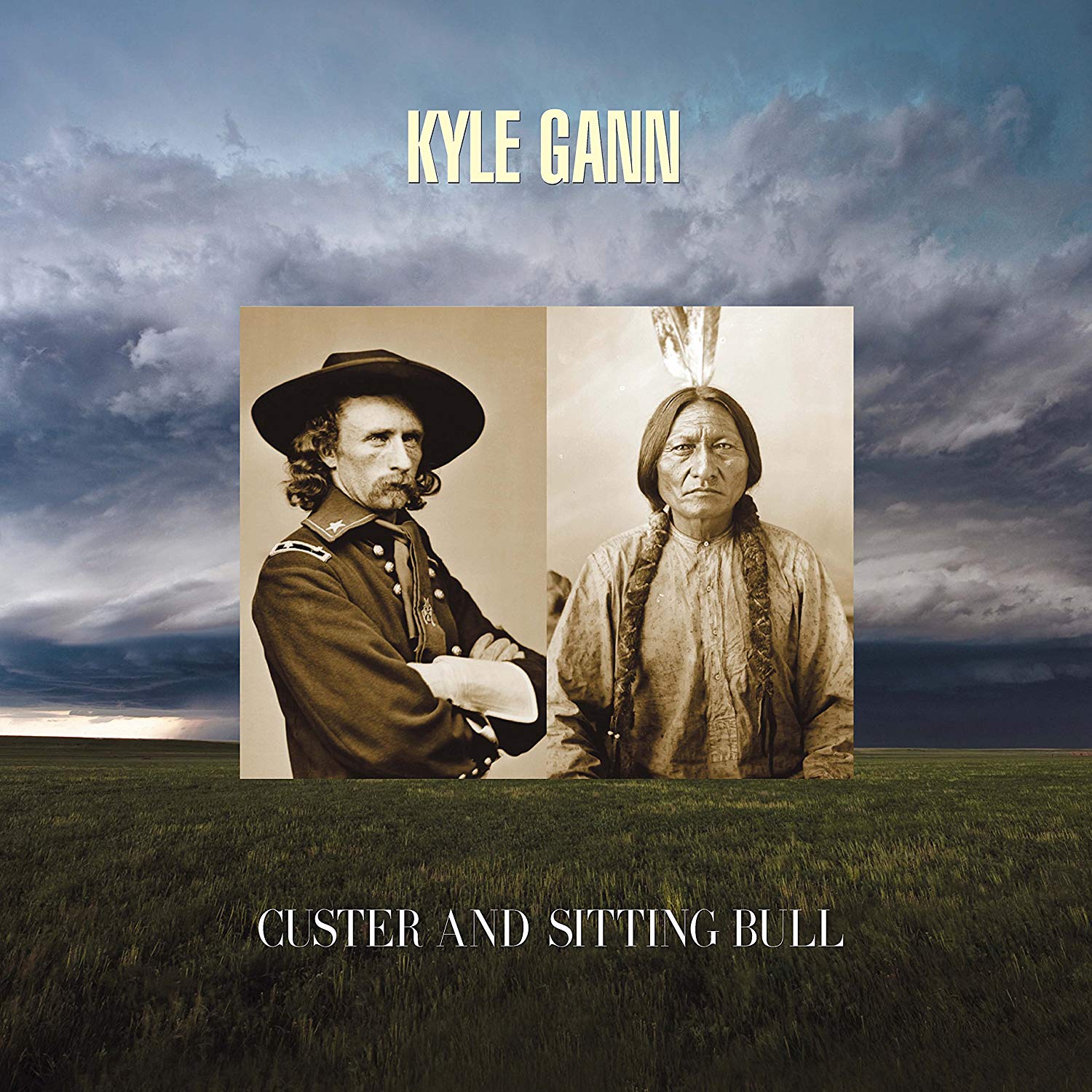
Custer and Sitting Bull (New World 80801-2)
Contains Gann's Custer and Sitting Bull (1995-99), So Many Little Dyings (1994),
and Scenario (2003-4)
"Custer and Sitting Bull was written at the end of the last century (1995-99), and is a monodrama
designed for performance by a vocalist-narrator, with electroacoustic accompaniment. But that description just scratches
the surface. Gann was the performer in the initial performances, which stretched out over several years of touring.
I saw it in New York at the Kitchen, and was blown away by his passionate engagement with the score, which he performed
from memory...
"[T]his is a piece that is more relevant than ever. It deals with the conflict of cultures, of how a ÒdominantÒ
one approaches the Other. And how the Other sees that invading power. Gann as an artist is able to make a polemic
point, yet he never loses track of the humanity of the subjects, no matter how distasteful some opinions may be.
"But beyond the conceptual, this is a remarkable piece of music! The whole thing is in just intonation,
which means we have tunings that are pungent, and feel appropriate to both the earlier time period of the tale,
and the elements of non-European culture involved." - Robert Carl, Fanfare magazine
"Kyle Gann, voice & electronics, sampling keyboard; Kenneth Patchen, voice; Martha Herr, voice. This recording
features three works by Kyle Gann (b. 1955): Custer and Sitting Bull, Scenario, and So Many Little Dyings, from the decade
1994 to 2004. Those familiar with Gann's music will recognize a commitment to just intonation (alternate tunings), paired
with a deployment of unexpected meters, often set to frequently shifting tempos. But here we also encounter another side
of Gann, a composer preoccupied with texts, the inherent rhythms found within the spoken word, and the dramatic potential
of these texts (including poems, interviews, stories, speeches, and even one psychic transmission). A musical reflection
on the historic encounter between Lieutenant Colonel George Armstrong Custer and the Lakota leader Sitting Bull, Custer
and Sitting Bull (1995-99), presented here in an updated version, is an example of a 'pocket opera,' a kind of one-person
opera that blossomed in the unfunded spaces of downtown Manhattan. From 1999 to 2007 Gann performed it live himself,
narrating the drama using various historical texts set to a MIDI keyboard accompaniment tuned to just intonation (ranging
from 20 to 31-note-to-the-octave scales). While it takes the form of reimagined American history, Custer is perhaps most
centrally about the value of sustained, repeated listening. Indeed, Gann's use of just intonation not only rewards but
arguably requires many hearings to access certain subtleties. The title of So Many Little Dyings (1994) is taken from the
Kenneth Patchen poem 'And What with the Blunders' (from First Will & Testament, 1939). The entire work originates from the
pitch and rhythm of Patchen's spoken voice, which Gann sampled and transcribed from a recorded recitation of the poem.
Listening to it, however, one might not perceive this borrowing immediately, as the work begins with the sound of a microtonal
toy piano imitating the rhythms and contours of Patchen's voice. Very slowly, over the course of the 7-minute work, the
piano's melody is taken over by a recording of Patchen's sampled voice. Scenario, for soprano and virtual orchestra, was
written between 2003-2004 but wasn't performed live until 2012. The text is taken from a 1932 S. J. Perelman story of the
same name, which consists of a non-stop, breathless collage of filmic clichs. On the page, Perelman's text continues for
pages without paragraph break and includes dialogue excerpts, Hollywood rumors, and behind-the-scenes film directions. In
Gann's setting of it, what he calls 'a surrealist collage opera, the musical analog of an animated cartoon, for
theatrical soprano and virtual orchestra,' each collaged portion is set in a corresponding style and character, so the
soprano must alternate rapidly between each affect and singing style throughout the 17-minute work." -
Forced Exposure
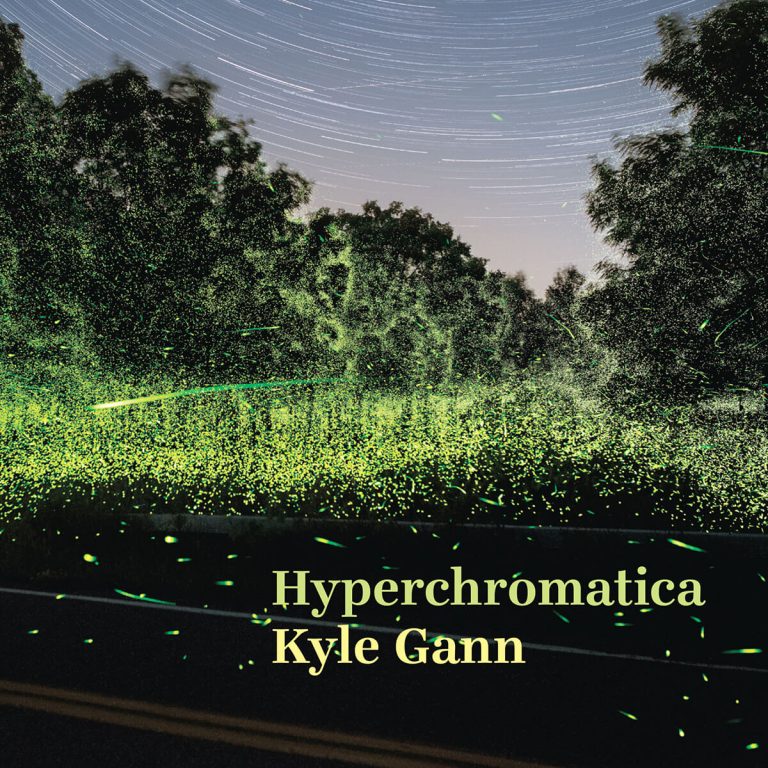
Hyperchromatica (2015-17) (Other Minds OM 1025-2)
Contains Gann's Andromeda Memories, Futility Row, Orbital Resonance,
Pavane for a Dead Planet, Star Dance, Ride the Cosmos, Dark Forces Signify,
The Lessing Is Miracle, Busted Grooves, Rings of Saturn, Pulsars, Neptune Night,
Spacecat, Reverse Gravity, Romance Postmoderne, Liquid Mechanisms, Galactic
Jamboree for three retuned Disklaviers
 "Hyperchromatica is an epic undertaking... Realized by three retuned, computer driven
pianos, this cycle spans more than two and a half hours, although time itself
seems to lurch into an intoxicated reel as glinting microtones teem and teeter woozily within its elastic measures.
In terms of ambition it might stand alongside Terry Riley's The Harp Of New Albion, La Monte Young's
The Well-Tuned Piano, even Conlon Nancarrow's magnificent player piano studies. Yet with his interlocking trio
of Disklaviers Gann has created something distinctive, aurally and conceptually cleansing, often startling and strange.
"Hyperchromatica is an epic undertaking... Realized by three retuned, computer driven
pianos, this cycle spans more than two and a half hours, although time itself
seems to lurch into an intoxicated reel as glinting microtones teem and teeter woozily within its elastic measures.
In terms of ambition it might stand alongside Terry Riley's The Harp Of New Albion, La Monte Young's
The Well-Tuned Piano, even Conlon Nancarrow's magnificent player piano studies. Yet with his interlocking trio
of Disklaviers Gann has created something distinctive, aurally and conceptually cleansing, often startling and strange.
Julian Cowley, The Wire, July 2018
 "Gann composed Hyperchromatica for three computer-tuned Disklavier pianos
strung together to become a single 243-key programmable microtonal instrument. 'Hyperchromatica I: Andromeda
Memories' begins with a chord euphonious enough to belong in a Satie Gymnopedie, but within seconds, departs
the world of equal temperament for alien cascades and glissandos that will, if you let them, change everything.
Be not afraid. Many pieces here, like 'VII: Dark Forces Signify,' are lucid, approachable, and slippery in the
most delightful way." - John Burdick in
Chronogram, June 2019
"Gann composed Hyperchromatica for three computer-tuned Disklavier pianos
strung together to become a single 243-key programmable microtonal instrument. 'Hyperchromatica I: Andromeda
Memories' begins with a chord euphonious enough to belong in a Satie Gymnopedie, but within seconds, departs
the world of equal temperament for alien cascades and glissandos that will, if you let them, change everything.
Be not afraid. Many pieces here, like 'VII: Dark Forces Signify,' are lucid, approachable, and slippery in the
most delightful way." - John Burdick in
Chronogram, June 2019
 "Quel voyage! Un cycle majeur de la musique du vingt-et-unime sicle. Kyle Gann est un formidable
crateur de mondes sonores." -
Inactuelles: Musiques Singulieres
"Quel voyage! Un cycle majeur de la musique du vingt-et-unime sicle. Kyle Gann est un formidable
crateur de mondes sonores." -
Inactuelles: Musiques Singulieres
 "Kyle Gann's eccentric and extravagant double-disc set Hyperchromatica is easily one of
the year's most fascinating releases... [It] reveals Gann's uncanny sensitivity and imagination in the face of what
for most would be an insurmountable challenge - crafting more than two and a half hours of engaging music for three
Disklaviers (grand pianos that can be computer-controlled) tuned to a thirty-three-tone scale. There isn't even a trace
of meaningless novelty or etude-like rigidity. Rather, the music exhibits hallucinatory fluidity, sliding seamlessly and
disorientingly between disparate aural worlds. His keen awareness of microtonal potential acts as a lubricant for these
shifts - bending and extending recognizable gestures, and erasing the distinction between timbre and pitch.
"Kyle Gann's eccentric and extravagant double-disc set Hyperchromatica is easily one of
the year's most fascinating releases... [It] reveals Gann's uncanny sensitivity and imagination in the face of what
for most would be an insurmountable challenge - crafting more than two and a half hours of engaging music for three
Disklaviers (grand pianos that can be computer-controlled) tuned to a thirty-three-tone scale. There isn't even a trace
of meaningless novelty or etude-like rigidity. Rather, the music exhibits hallucinatory fluidity, sliding seamlessly and
disorientingly between disparate aural worlds. His keen awareness of microtonal potential acts as a lubricant for these
shifts - bending and extending recognizable gestures, and erasing the distinction between timbre and pitch.
"Just as Conlon Nancarrow (whom Gann wrote a book about) folded boogie-woogie and ragtime vocabulary into his
innovative player-piano music, Gann's nod to Nanarrow is only one ingredient of his recipe. The overall architecture
seems closer to Debussy's Preludes, albeit glimpsed through a prismatic twenty-first-century lens. Each piece paints
its own distinct image, simultaneously asserting cohesion within a larger arc. Notable in this fragmentary through-line
are the surreal allusions: one catches wafts of Balinese gamelan, jazz lyricism, and various classical forms - even
strains of electronic music.
"Gann's slyness in manoeuvring thirty-three-tone harmony is matched by his deployment of the Disklavier itself.
He approaches the instrument as both a piano and as its own distinct medium. The wild rectangular explosion of flat
fortissimos that marks the middle of 'Pavane for a Dead Planet' is a jarring reminder that you're listening to a
machine - which contrasts an otherwise warm flow of notes. On 'Pulsars,' the instrument's mechanical precision
fuses the fine pitch gradations to produce an otherworldly string of sparse, flanging tones. - Nick Storring,
MusicWorks, Winter 2018
 "...brought microtonal music into the mainstream, or at least proved that it could be more
than a detour." - Andrew Anderson,
Theater Jones
"...brought microtonal music into the mainstream, or at least proved that it could be more
than a detour." - Andrew Anderson,
Theater Jones
 "For a relatively easy ride into Gann's universe, 'Dark Forces Signify' might be just
the ticket. Honoring Black Lives Matter..., this is an absolutely gorgeous chordal exploration of Gann's tuning
system that allows each harmony to resonate to the point of establishment before being supplanted. Conventional
harmony - that false binary this music does so much to eradicate - gradually makes way for increasingly disparate
sonorities, a gentle but inexorable and cosmic journey into what might feel like an altered state to the unprepared....
There is no substitute for simply sitting down and immersing in this extraordinary sound world as the melodies
and chords stun, bite, and soothe, as the internal beats collide and subside, as various historical and stylistic
tropes abet and abate, all channeled through Gann's whimsical approach to music history. Leave preconceptions
at the door, and enjoy music as fun and adventurous as it is deep and deeply satisfying. Those 12 pitches we
know and love may never satisfy in quite the same way again." - Marc Medwin,
Fanfare
Magazine, Sept-Oct 2018
"For a relatively easy ride into Gann's universe, 'Dark Forces Signify' might be just
the ticket. Honoring Black Lives Matter..., this is an absolutely gorgeous chordal exploration of Gann's tuning
system that allows each harmony to resonate to the point of establishment before being supplanted. Conventional
harmony - that false binary this music does so much to eradicate - gradually makes way for increasingly disparate
sonorities, a gentle but inexorable and cosmic journey into what might feel like an altered state to the unprepared....
There is no substitute for simply sitting down and immersing in this extraordinary sound world as the melodies
and chords stun, bite, and soothe, as the internal beats collide and subside, as various historical and stylistic
tropes abet and abate, all channeled through Gann's whimsical approach to music history. Leave preconceptions
at the door, and enjoy music as fun and adventurous as it is deep and deeply satisfying. Those 12 pitches we
know and love may never satisfy in quite the same way again." - Marc Medwin,
Fanfare
Magazine, Sept-Oct 2018
 "It... creates the effect you have or might have had when viewing for a protracted period the upside-down image
in an old camera obscura. At first there may be a kind of queasiness when acclimating to this dramatic tuning.
Then like the camera obscura experience the perceptive mind may compensate (it eventually did for me) and you
suddenly turn in your mind the sound image rightside-up, so to speak. Or in simple terms you learn to hear the
new proportions and a retuned world in its own right as natural and consistent.
"It... creates the effect you have or might have had when viewing for a protracted period the upside-down image
in an old camera obscura. At first there may be a kind of queasiness when acclimating to this dramatic tuning.
Then like the camera obscura experience the perceptive mind may compensate (it eventually did for me) and you
suddenly turn in your mind the sound image rightside-up, so to speak. Or in simple terms you learn to hear the
new proportions and a retuned world in its own right as natural and consistent.
"All this experience can be had repeatedly by getting the music and playing it over again. There is no other
real way to understand the music except via the senses, over time and much more than a few times. The effort
is well worth it. Bravo! It is a major landmark in microtonal music." -
Grego Applegate Edwards
 "Kyle Gann's magnum opus Hyperchromatica is an extended set of movements (spread
across two CDs) scored for three retuned mechanical pianos (Disklaviers). The music draws together every facet
of Gann's style and life-long musical interests: rhythmic complexity, microtonality, extended "tonal" harmonies
and voice leading, post-Minimalist surfaces, and more. The result is a tremendous mix of sheer enjoyment coupled
with extremely sophisticated compositional craft." - Carson Cooman, Fanfare magazine (top ten list)
"Kyle Gann's magnum opus Hyperchromatica is an extended set of movements (spread
across two CDs) scored for three retuned mechanical pianos (Disklaviers). The music draws together every facet
of Gann's style and life-long musical interests: rhythmic complexity, microtonality, extended "tonal" harmonies
and voice leading, post-Minimalist surfaces, and more. The result is a tremendous mix of sheer enjoyment coupled
with extremely sophisticated compositional craft." - Carson Cooman, Fanfare magazine (top ten list)
 "The 17 movements make me think of an inflated Carnaval, which was my favorite
piano cycle until now.... Each of the 17 explores one or more musical
problems, each is tightly organized, and each is great fun in its own idiosyncratic way. Plus, by virtue of its
acoustically derived scale, the set probably has more right to claim organicism than anything else I've ever heard.
Still, all that organization, and all the explanation in the world, would be meaningless if the music were not
compelling, and it most certainly is - in all 17 cases. Even as apparently cerebral a movement as the eleven-minute
'Orbital Resonance' is, it proceeds with a logic that leads listeners instead of ignoring them." -
Andrew Anderson,
in Theater Jones: North Texas Performing Arts News
"The 17 movements make me think of an inflated Carnaval, which was my favorite
piano cycle until now.... Each of the 17 explores one or more musical
problems, each is tightly organized, and each is great fun in its own idiosyncratic way. Plus, by virtue of its
acoustically derived scale, the set probably has more right to claim organicism than anything else I've ever heard.
Still, all that organization, and all the explanation in the world, would be meaningless if the music were not
compelling, and it most certainly is - in all 17 cases. Even as apparently cerebral a movement as the eleven-minute
'Orbital Resonance' is, it proceeds with a logic that leads listeners instead of ignoring them." -
Andrew Anderson,
in Theater Jones: North Texas Performing Arts News
 "There are moments of frenetic chaos, to be sure, but Gann is focused on making
microtonal music not accessible, but more 'attractive and seductive.' Gann manipulates our suspension of
disbelief, moving seamlessly from typically pianistic passages to figures almost too complex to comprehend.
The strata of microtonal pitch and polytempo provides an unfamiliar lushness.... The future is now,
and Kyle Gann is leading the way."
Soundohm
"There are moments of frenetic chaos, to be sure, but Gann is focused on making
microtonal music not accessible, but more 'attractive and seductive.' Gann manipulates our suspension of
disbelief, moving seamlessly from typically pianistic passages to figures almost too complex to comprehend.
The strata of microtonal pitch and polytempo provides an unfamiliar lushness.... The future is now,
and Kyle Gann is leading the way."
Soundohm
 2018 Top Ten List. -
Said the Gramophone.
2018 Top Ten List. -
Said the Gramophone.
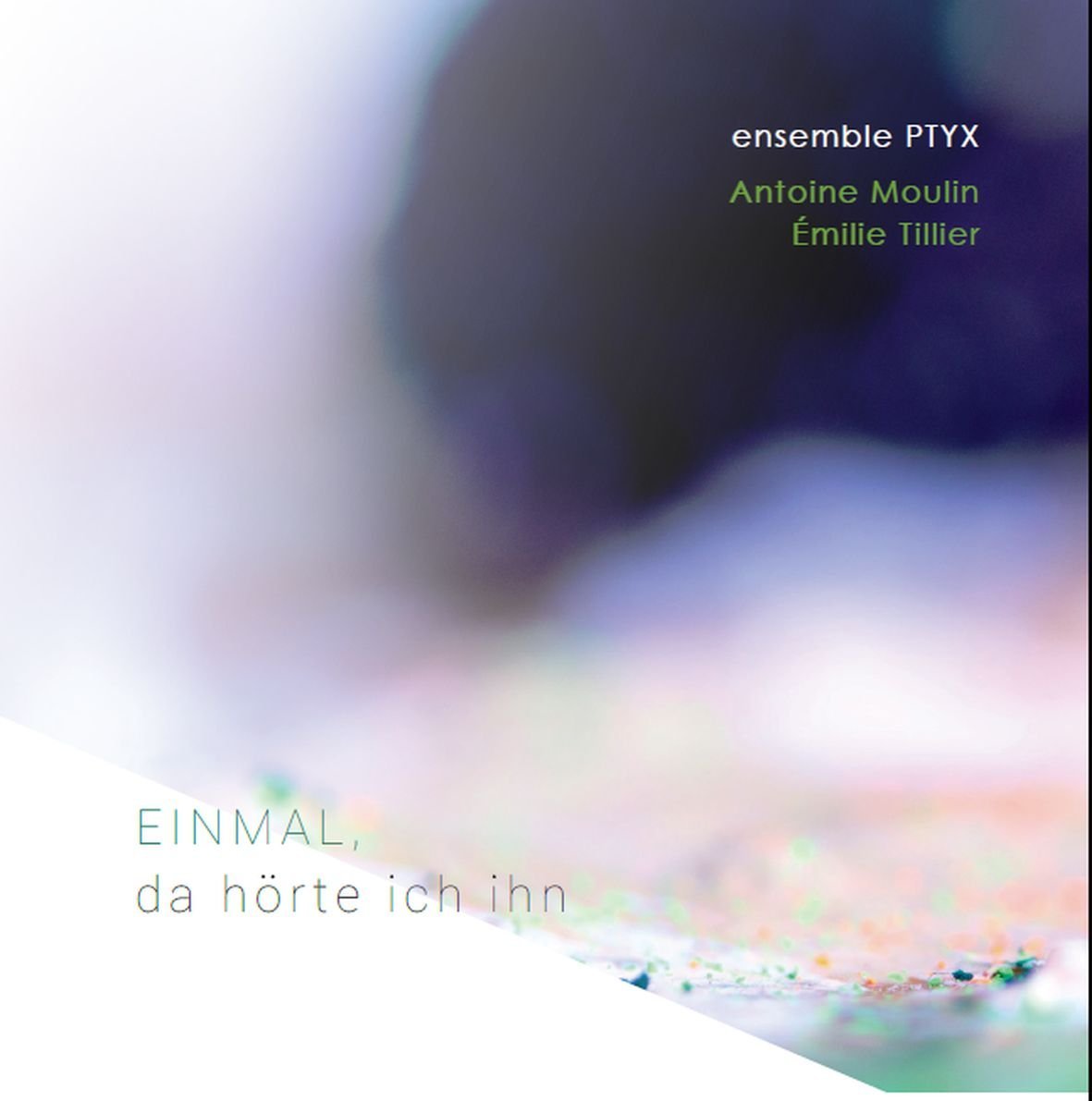
Ensemble Ptyx: Einmal, Da Horte Ich Ihn (Vous Ne Revez Pas Encore)
Contains Gann's Chicago Spiral (1990-91), Steve Reich's New York Counterpoint, and works by
Thierry Machuel, Jean-Baptiste Apere, and Guillaume Druel
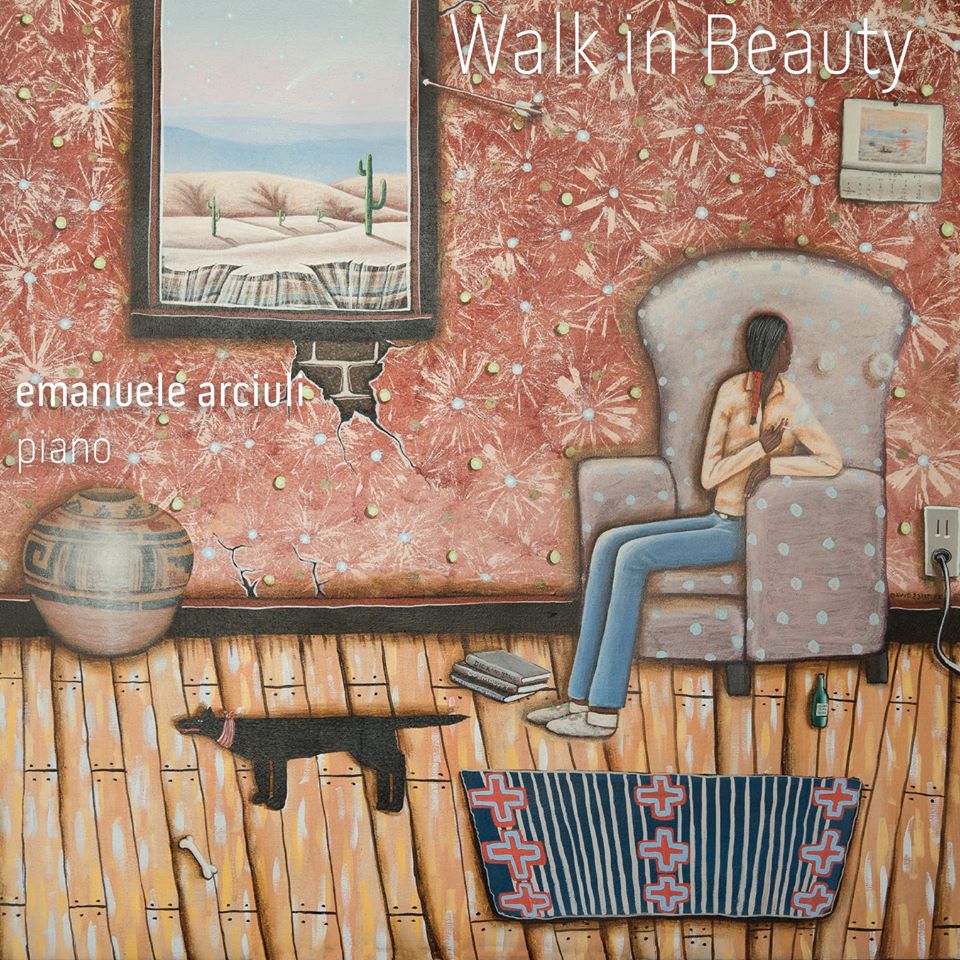 Emanuele Arciuli: Walk in Beauty (Innova Recordings #255)
Emanuele Arciuli: Walk in Beauty (Innova Recordings #255)
Contains Earth-Preserving Chant by Kyle Gann, plus piano works by Connor Chee, Peter
Garland, Michael Daugherty, John Luther Adams, Raven Chacon, Martin Bresnick, Louis W. Ballard, Jennifer Higdon,
Peter Gilbert, Carl Ruggles, Brent Michael Davids, and Talib Rasul Hakim
 "Kyle Gann wrote his Earth-Preserving Chant after hearing about the oil spill in the Gulf of Mexico,
and integrating an American Indian style chant or prayer in response to Emanuele Arciuli's commission. 'The song
would have to be a model of ecology, or carefully husbanded resources, using as little material as possible.' A
gentle ostinato in open intervals provides a bed of sound for melodic shapes and developing pianistic flourishes
above, the whole creating a meditative and quite hypnotic 'pill' to be taken before deciding on whether or not
to drill for ever more fossil fuels."
"Kyle Gann wrote his Earth-Preserving Chant after hearing about the oil spill in the Gulf of Mexico,
and integrating an American Indian style chant or prayer in response to Emanuele Arciuli's commission. 'The song
would have to be a model of ecology, or carefully husbanded resources, using as little material as possible.' A
gentle ostinato in open intervals provides a bed of sound for melodic shapes and developing pianistic flourishes
above, the whole creating a meditative and quite hypnotic 'pill' to be taken before deciding on whether or not
to drill for ever more fossil fuels."
- Music Web International
 "...there are wonderfully kinetic pieces by Kyle Gann and Martin Bresnick..."
"...there are wonderfully kinetic pieces by Kyle Gann and Martin Bresnick..."
- Joshua Kosman, San Francisco Chronicle
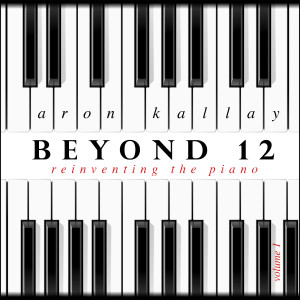 Aron Kallay, pianist: Beyond 12: Reinventing the Piano (Microfest Recordings)
Aron Kallay, pianist: Beyond 12: Reinventing the Piano (Microfest Recordings)
Contains:
Kyle Gann: Echoes of Nothing, along with works by Isaac Schankler, Aaron K. Johnson, John Schneider, Tom Flaherty, Vera Ivanova, Jason Heath, and Brian Shepard
 "Kyle Gann's Echoes of Nothing is in two movements, the first languidly Satie-esque, the second a rapid boogie-woogie of incomparable wit that should be the 'C#-Minor Prelude' of just intonation if there were any justice." - Robert Carl, Fanfare
"Kyle Gann's Echoes of Nothing is in two movements, the first languidly Satie-esque, the second a rapid boogie-woogie of incomparable wit that should be the 'C#-Minor Prelude' of just intonation if there were any justice." - Robert Carl, Fanfare
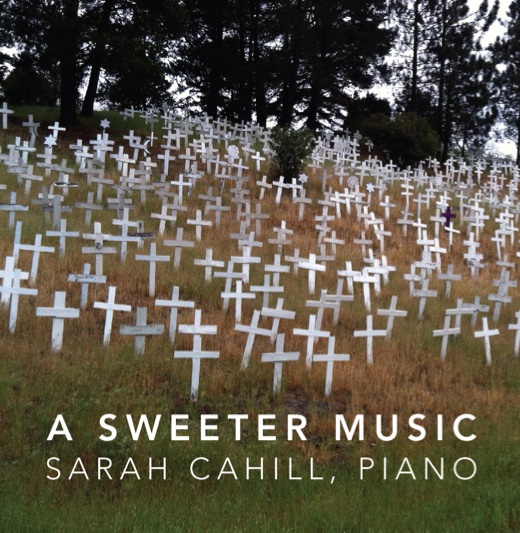 Sarah Cahill, pianist: A Sweeter Music (Other Minds)
Sarah Cahill, pianist: A Sweeter Music (Other Minds)
Contains:
Kyle Gann: War Is Just a Racket, along with works by Terry Riley, Meredith Monk, Frederic Rzewski, Yoko Ono, Phil Kline, Carl Stone, and The Residents
 "The most extraordinary composition on the album is 'War Is Just a Racket' by composer/music critic Kyle Gann." Roberto Friedman, Edge Media Network
"The most extraordinary composition on the album is 'War Is Just a Racket' by composer/music critic Kyle Gann." Roberto Friedman, Edge Media Network
 Only two of these works include text: whereas The Residents' drum no fife uses a recorded text that addresses the universality of the desire for both war and piece, in War is Just a Racket Kyle Gann instead gives Cahill herself text to recite while playing, drawn specifically from a 1933 speech by U.S. General Smedley Butler denouncing the military and capitalism. Gann aligns certain chords and cadences with specific words and lines, with solo piano interludes that are pastiches of Americana, evoking a distorted Norman Rockwell image of apple pie. Within this compilation, Gann's work is the most explicit in its condemnation of war and the motivations that have driven America into violent conflicts. - Sidney Chen, New Music Box
Only two of these works include text: whereas The Residents' drum no fife uses a recorded text that addresses the universality of the desire for both war and piece, in War is Just a Racket Kyle Gann instead gives Cahill herself text to recite while playing, drawn specifically from a 1933 speech by U.S. General Smedley Butler denouncing the military and capitalism. Gann aligns certain chords and cadences with specific words and lines, with solo piano interludes that are pastiches of Americana, evoking a distorted Norman Rockwell image of apple pie. Within this compilation, Gann's work is the most explicit in its condemnation of war and the motivations that have driven America into violent conflicts. - Sidney Chen, New Music Box
 Minimal Piano Collection Volume X-XX
Minimal Piano Collection Volume X-XX
Contains:
Kyle Gann: Long Night, along with works by John Adams, Jurriaan Andriessen, Louis Andriessen, Marcel Bergmann, William Duckworth, Julius Eastman, Douwe Eisenga, Morton Feldman, Graham Fitkin, Joep Franssens, Philip Glass, Gabriel Jackson, Tom Johnson, Simeon ten Holt, David Lang, Colin McPhee, Chiel Meijering, Wim Mertens, John Metcalf, Carlos Michans, Meredith Monk, Arvo Part, Michael Parsons, Alexander Rabinovitch, Steve Reich, Frederic Rzewski, Tim Seddon, Jeroen van Veen, Jacob er Veldhuis, and Kevin Volans
Performers: Jeroen van Veen, Sandra van Veen, Elizabeth Bergmann, Marcel Bergmann, and Tamara Rumiantsev
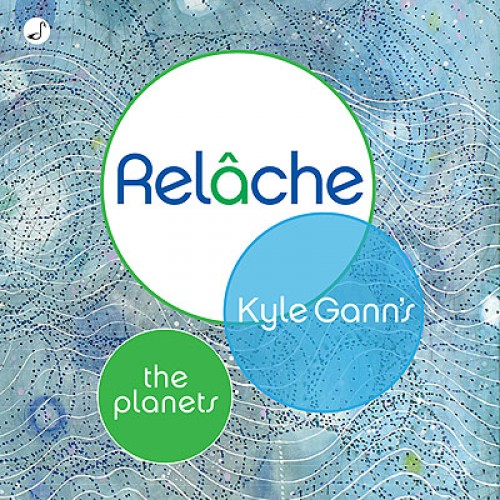 Relache: The Planets (Meyer Media MM10014)
Relache: The Planets (Meyer Media MM10014)
Contains:
Kyle Gann: The Planets: Sun, Moon, Venus, Mars, Jupiter, Mercury, Saturn, Uranus, Neptune, Pluto
Performers: Relache ensemble (Michele Kelly, Lloyd Shorter, Bob Butryn, Chuck Holdeman, John Dulik, Chris Hanning, Ruth Frazier, Sarah Sutton, Douglas Mapp)
 "For too long it has seemed like the most comfortable portions of the cosmos were musically owned by a dead British composer. Holst had essentially staked his claim on the biggest chunks of well-known real estate outside of the Earth and put up a sort of musical "Do Not Enter" sign. We composers could write about the Earth or Pluto, the "dwarf planets" that may come and go, or any other cosmic entity (manmade or otherwise), but Holst took the celebrities of our galactic neighborhood and hung them on display like so many apples on the Tree of Knowledge. From 1994-2008, Kyle Gann refused to be daunted by this musical monopoly and created his own suite of suites inspired mainly by the more recent evolutions in cosmology/astrology.
"For too long it has seemed like the most comfortable portions of the cosmos were musically owned by a dead British composer. Holst had essentially staked his claim on the biggest chunks of well-known real estate outside of the Earth and put up a sort of musical "Do Not Enter" sign. We composers could write about the Earth or Pluto, the "dwarf planets" that may come and go, or any other cosmic entity (manmade or otherwise), but Holst took the celebrities of our galactic neighborhood and hung them on display like so many apples on the Tree of Knowledge. From 1994-2008, Kyle Gann refused to be daunted by this musical monopoly and created his own suite of suites inspired mainly by the more recent evolutions in cosmology/astrology.
"Relache proves to be the perfect vehicle for Gann's music and this collection of works showcases their extreme virtuosity in the realms of rhythm and blend. Relache's rather quirky instrumentation provides a constantly shifting sense of color and, like an instrumental Pierrot Lunaire, each movement maintains its own timbral character within the context of a unified whole. At first I was skeptical of the synthesizer but in the hands of John Dulik the synth always blends with the woodwind-dominated group and never sounds cheesy or anything less than ethereal. Gann, of course, knows what he is doing and The Planets comes across with light and careful touch. Every movement, no matter how driving and rigorous, maintains a fundamental buoyancy.
"While some of these works were available as singles from Gann's website, this disc is the first aggregation of all ten movements collected into three "books." Each book could be performed autonomously and, to my ears at least, each individual movement works on its own as well. Gann's attention to internal driving structures never trumps his generally accessible and listenable sonic palette. This music is intensely difficult to perform but Gann and Relache never make it difficult to hear. The surface is attractive and approachable and repeated listenings reveal a web of clockwork structures that madly spin forth in a way that would make Bach jealous. I never feel as if I am receiving some grand and verbose lecture on How to Write Post-Minimal Music, even though this disc is a treasure trove of relationships and techniques. Kyle Gann is, in this respect, the Neil Degrasse Tyson of contemporary music. Gann has all the smarts and his passion towards the subject is augmented by sharp and highly refined communication skills. I'm sure Gann would kill on The Daily Show, too." - Jay Batzner, Sequenza 21
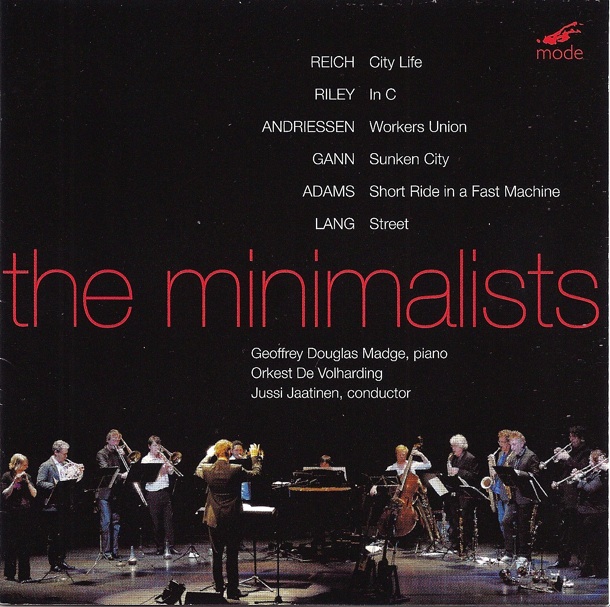 Orkest de Volharding: The Minimalists (Mode Records 214/5)
Orkest de Volharding: The Minimalists (Mode Records 214/5)
Contains:
Kyle Gann: Sunken City (Concerto for Piano and Winds, in memoriam New Orleans)
David Lang: Street
Steve Reich: City Life
Louis Andriessen: Worker's Union
Terry Riley: In C
John Coolidge Adams: Short Ride in a Fast Machine
Performers: Orkest de Volharding conducted by Jussi Jaatinen, Geoffrey Douglas Madge, soloist
 ***** (five stars) - "This 2CD set features splendid interpretations of minimalist works by the Dutch ensemble Orkest de Volharding, ranging from Terry Riley's 60s milestone In C to Kyle Gann's 2007 paean to New Orleans, Sunken City, a diptych whose "Before" section refers back to Dixieland and Jelly Roll Morton, followed by a longer "After" section in which the desolate piano and mournful brass slowly battle their way back to a semblance of former ebullience." - Andy Gill, The Independent, London
***** (five stars) - "This 2CD set features splendid interpretations of minimalist works by the Dutch ensemble Orkest de Volharding, ranging from Terry Riley's 60s milestone In C to Kyle Gann's 2007 paean to New Orleans, Sunken City, a diptych whose "Before" section refers back to Dixieland and Jelly Roll Morton, followed by a longer "After" section in which the desolate piano and mournful brass slowly battle their way back to a semblance of former ebullience." - Andy Gill, The Independent, London
 "Kyle Gann's Sunken City (in Memoriam New Orleans; 2007) forwards this thread of continued relevance; its two movements progress from an Ivesian gloss on traditional jazz elements to a somber, Ellingtonian dirge on New Orleans' status once Hurricane Katrina put it under the water, though Gann shies away from pictorializing the violence that claimed some of the stranded in the first week that followed." - Uncle Dave Lewis, AllMusic.com
"Kyle Gann's Sunken City (in Memoriam New Orleans; 2007) forwards this thread of continued relevance; its two movements progress from an Ivesian gloss on traditional jazz elements to a somber, Ellingtonian dirge on New Orleans' status once Hurricane Katrina put it under the water, though Gann shies away from pictorializing the violence that claimed some of the stranded in the first week that followed." - Uncle Dave Lewis, AllMusic.com
 "Kyle Gann (b. 1955) may be familiar to some long-time readers, because he wrote for this publication [Fanfare] years ago. He has gone on to a remarkable polymathic career as composer, critic, teacher, and scholar. I think he's not really a "minimalist," because much of his music exults in complexity and prolixity (as does the piece on this disc). But he has written a number of more stripped-down and repetitive works, and he's been a staunch and fearless advocate of much of this music, so his inclusion here makes sense, even if to me he's more of a 'maverick.' His Sunken City (In Memoriam New Orleans) (2007) is a piano concerto in two movements, "Before" and "After," lasting about a half-hour. Of course, we all know what happened in between. The first is a rambunctious evocation of New Orleans jazz from the 1920s (I think Jelly Roll Morton, but Gann has several models in mind). This music is not "jazz" anymore than Stravinsky's version was, but authenticity isn't the point. In fact any attempted "authenticity" would ruin the piece. Instead Gann's clashing, stomping rhythms are a kind of distillation of the original's energy, put through a very personal filter. I remember being impressed a few years back by a set of his Disklavier pieces (New World 80633-2, reviewed in 29:2), in part for their encyclopedic understanding of a vast range of styles of American music, jazz included. This work confirms that judgment.
"Kyle Gann (b. 1955) may be familiar to some long-time readers, because he wrote for this publication [Fanfare] years ago. He has gone on to a remarkable polymathic career as composer, critic, teacher, and scholar. I think he's not really a "minimalist," because much of his music exults in complexity and prolixity (as does the piece on this disc). But he has written a number of more stripped-down and repetitive works, and he's been a staunch and fearless advocate of much of this music, so his inclusion here makes sense, even if to me he's more of a 'maverick.' His Sunken City (In Memoriam New Orleans) (2007) is a piano concerto in two movements, "Before" and "After," lasting about a half-hour. Of course, we all know what happened in between. The first is a rambunctious evocation of New Orleans jazz from the 1920s (I think Jelly Roll Morton, but Gann has several models in mind). This music is not "jazz" anymore than Stravinsky's version was, but authenticity isn't the point. In fact any attempted "authenticity" would ruin the piece. Instead Gann's clashing, stomping rhythms are a kind of distillation of the original's energy, put through a very personal filter. I remember being impressed a few years back by a set of his Disklavier pieces (New World 80633-2, reviewed in 29:2), in part for their encyclopedic understanding of a vast range of styles of American music, jazz included. This work confirms that judgment.
"But the second movement is where things get really interesting. It's an elegy, starting with a passacaglia stated by a series of chords, each of which "swamps" the listener like a wash of sound breaking its boundaries and cascading upon us (like collapsing levees). The rest of the movement slowly picks up the pieces, and by the end there is a return to some of the opening's energy, but it doesn't go for any easy, happy ending. The effect is a glimmer of hope, but tempered by a sense of real tragedy." - Robert Carl, Fanfare magazine
 "Kyle Gann's Sunken City, a memorial piece for New Orleans after the devastation of Hurricane Katrina, is a clever (and surely rhythmically complex) paraphrase of New Orleans blues and early jazz in the guise of a concerto for piano and winds. The textures are richly varied and endlessly fascinating... Gann has spent so much of his energy advancing the cause of younger and little-known composers... and done it so unselfishly that his own work as a composer is still tragically underappreciated. This is a piece that demands and rewards repeated hearings, and I'm glad to see it widely available." - Haskins, American Record Guide, March/April 2010, p. 182
"Kyle Gann's Sunken City, a memorial piece for New Orleans after the devastation of Hurricane Katrina, is a clever (and surely rhythmically complex) paraphrase of New Orleans blues and early jazz in the guise of a concerto for piano and winds. The textures are richly varied and endlessly fascinating... Gann has spent so much of his energy advancing the cause of younger and little-known composers... and done it so unselfishly that his own work as a composer is still tragically underappreciated. This is a piece that demands and rewards repeated hearings, and I'm glad to see it widely available." - Haskins, American Record Guide, March/April 2010, p. 182
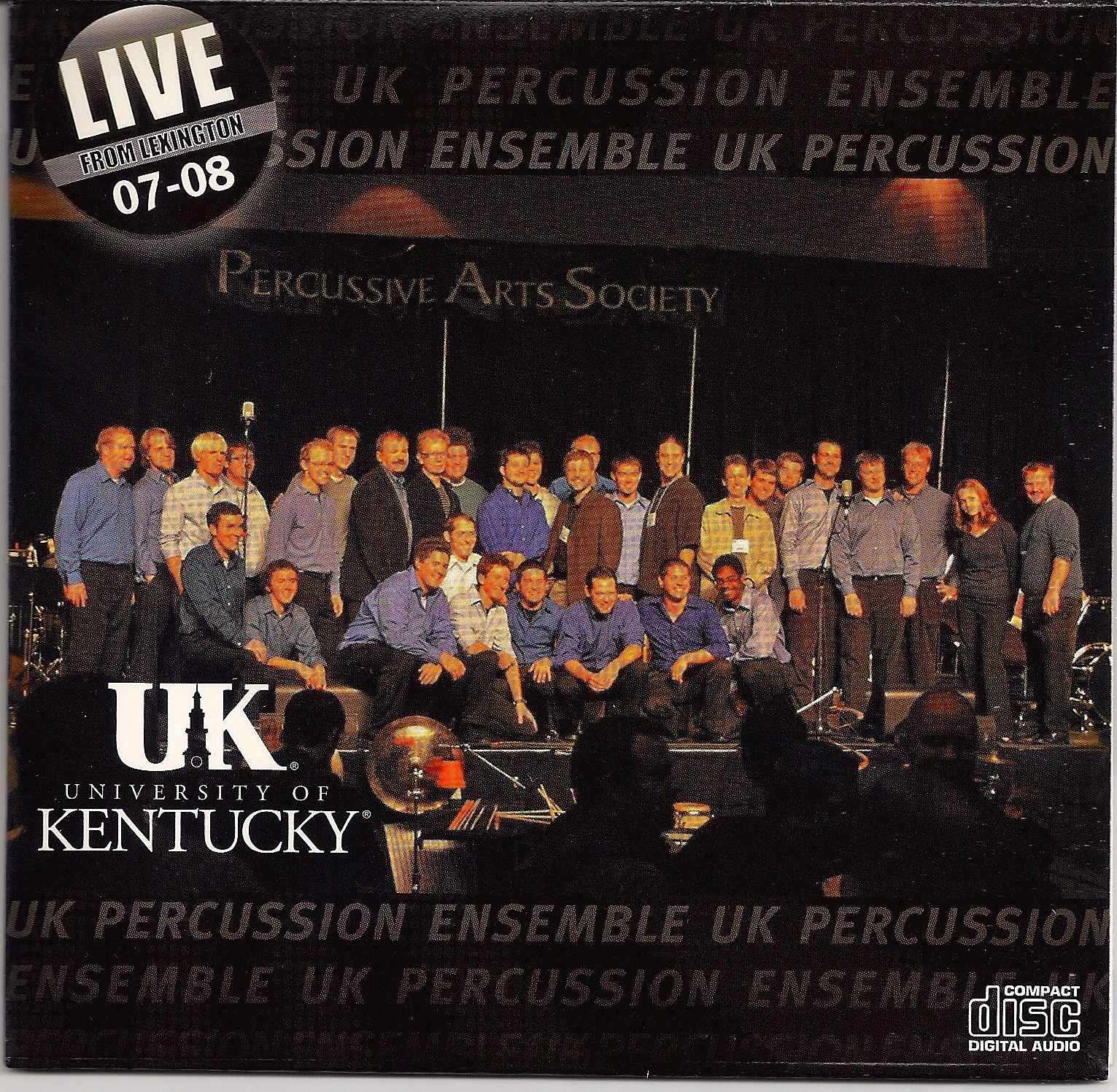 University of Kentucky Percussion Ensemble: Live from Lexington 07-08 (UK School of Music)
University of Kentucky Percussion Ensemble: Live from Lexington 07-08 (UK School of Music)
Contains:
Kyle Gann: Snake Dance No. 2
with works by Christopher Deane, Brian Nozny, David Crowell, Paul Lansky, John Cage, Christopher Adler, and Anders Astrand
Performers: University of Kentucky Percussion Ensemble directed by James Campbell
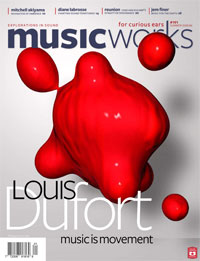 Musicworks CD 101
Musicworks CD 101
Contains:
"Custer's Ghost to Sitting Bull" from Custer and Sitting Bull (2007 version)
Triskaidekaphonia
Performer: Kyle Gann
Also music by Ann Southam, Louis Dufort, Chris Bryan, Maggie Nicols, and Marla Hlady
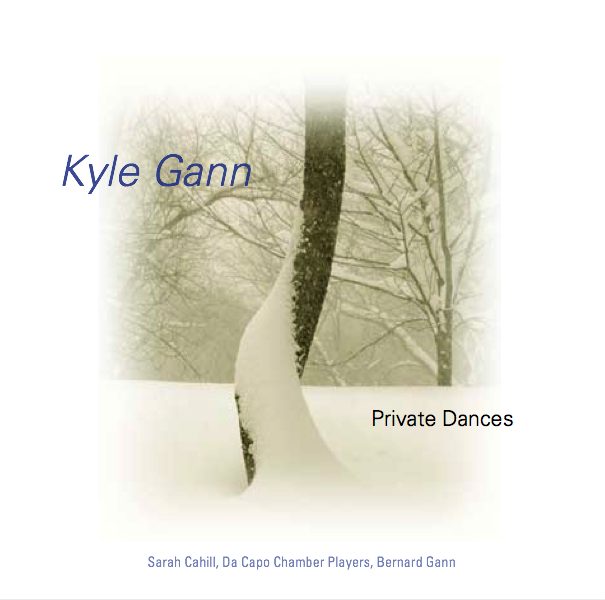 Private Dances (New Albion 137)
Private Dances (New Albion 137)
Contains:
Private Dances
Hovenweep
Time Does Not Exist
The Day Revisited
On Reading Emerson
Performers: Sarah Cahill, The Da Capo Chamber Players, Bernard Gann
 "Kyle Gann (b.1955) is a composer whose music inevitably is structured
with an array of metric, harmonic and melodic ideas and strategies that would seem to guarantee
it to be beyond listenable in its complexity. However, the opposite is in fact what the listener
receives. The work is deeply felt, lyrically clear and driven by song. Gann is also known to the
musical world as an author and critic, and teaches in the music department at Bard College.
Private Dances (2004) is so hot, so longing with yearning, so lonely with the blues,
so salacious in its undressing of the unsuspecting listener, that it could properly carry one
a warning sticker. It is a 'listener beware' collection in six movements -- sexy, sad,
sentimental, sultry, saintly, swingin'. The pianist, Sarah Cahill (one of the generation's
premier 'woman on piano' performers) leaves you, the innocent listener, with nothing; she took
it all. This piece is what was going on in the mind of the guy at the end of the counter in
the Edward Hopper painting, Nighthawks."
-Forced Exposure
"Kyle Gann (b.1955) is a composer whose music inevitably is structured
with an array of metric, harmonic and melodic ideas and strategies that would seem to guarantee
it to be beyond listenable in its complexity. However, the opposite is in fact what the listener
receives. The work is deeply felt, lyrically clear and driven by song. Gann is also known to the
musical world as an author and critic, and teaches in the music department at Bard College.
Private Dances (2004) is so hot, so longing with yearning, so lonely with the blues,
so salacious in its undressing of the unsuspecting listener, that it could properly carry one
a warning sticker. It is a 'listener beware' collection in six movements -- sexy, sad,
sentimental, sultry, saintly, swingin'. The pianist, Sarah Cahill (one of the generation's
premier 'woman on piano' performers) leaves you, the innocent listener, with nothing; she took
it all. This piece is what was going on in the mind of the guy at the end of the counter in
the Edward Hopper painting, Nighthawks."
-Forced Exposure
 "Gann's methods may be cerebral, but his results are immediately appealing. Part of the reason may be
that while his complexity is primarily rhythmic, his harmonic language is unconventionally but recognizably tonal.
In Private Dances, the complexity of the rhythmic structures sounds natural, never undermining the dance-
like character of the movements, and it might not even be apparent to someone who hadn't read the program notes.
Each of the remaining pieces, for piano or chamber ensemble, is strikingly atmospheric. With a title taken from
Freud, Time Does Not Exist for piano spins gestures of gossamer delicacy into an ethereal, dream-like
soundscape. In The Day Revisited, winds and strings tuned to 29-note scale play against... keyboard samplers,
and the effect is mesmerizing and mysteriously disorienting.... -
Stephen Eddins, AllMusic.com
"Gann's methods may be cerebral, but his results are immediately appealing. Part of the reason may be
that while his complexity is primarily rhythmic, his harmonic language is unconventionally but recognizably tonal.
In Private Dances, the complexity of the rhythmic structures sounds natural, never undermining the dance-
like character of the movements, and it might not even be apparent to someone who hadn't read the program notes.
Each of the remaining pieces, for piano or chamber ensemble, is strikingly atmospheric. With a title taken from
Freud, Time Does Not Exist for piano spins gestures of gossamer delicacy into an ethereal, dream-like
soundscape. In The Day Revisited, winds and strings tuned to 29-note scale play against... keyboard samplers,
and the effect is mesmerizing and mysteriously disorienting.... -
Stephen Eddins, AllMusic.com
 "This one completely defies expectations. In a good way. And expectations were pretty high when reaching for this disc. Private Dances is filled with beautiful moments and ideas that 'dance' with a translucence of melodic and harmonic ideas creatively and formally developed with the discipline of a writer's sense of pace and editing. The Day Revisited is a particular treasure within this collection of gems as a just intonation ensemble work that unfolds with one delicious bend after another. The solo piano music has a Satie-esque sensibility beautifully realized by Sarah Cahill. Enthusiastically recommended." - Devin Hurd, Hurd Audio
"This one completely defies expectations. In a good way. And expectations were pretty high when reaching for this disc. Private Dances is filled with beautiful moments and ideas that 'dance' with a translucence of melodic and harmonic ideas creatively and formally developed with the discipline of a writer's sense of pace and editing. The Day Revisited is a particular treasure within this collection of gems as a just intonation ensemble work that unfolds with one delicious bend after another. The solo piano music has a Satie-esque sensibility beautifully realized by Sarah Cahill. Enthusiastically recommended." - Devin Hurd, Hurd Audio
 "It is difficult to put one's finger on exactly what it is that makes Kyle Gann's music so affecting. This set of five works... is consistently quiet in mood, but is never exactly either contemplative or somber. The only word that comes immediately to mind is impassive, but that is not right either.... [B]est of all are the two ensemble pieces, both of which, in rather different ways, contribute new shades to the program's limited but interesting palette of tonal colors. Hovenweep employs a similar technique to that of Time Does Not Exist in the service of a sort of tone poem designed to invoke images of Anasazi culture with results that are heartbreakingly pretty and deeply regretful; The Day Revisited is a microtonal reworking of a piece Gann originally produced in 1982. Though harmonically unsettling, this work is ultimately no less accessible and attractive than Hovenweep." - Rick Anderson, Project MUSE
"It is difficult to put one's finger on exactly what it is that makes Kyle Gann's music so affecting. This set of five works... is consistently quiet in mood, but is never exactly either contemplative or somber. The only word that comes immediately to mind is impassive, but that is not right either.... [B]est of all are the two ensemble pieces, both of which, in rather different ways, contribute new shades to the program's limited but interesting palette of tonal colors. Hovenweep employs a similar technique to that of Time Does Not Exist in the service of a sort of tone poem designed to invoke images of Anasazi culture with results that are heartbreakingly pretty and deeply regretful; The Day Revisited is a microtonal reworking of a piece Gann originally produced in 1982. Though harmonically unsettling, this work is ultimately no less accessible and attractive than Hovenweep." - Rick Anderson, Project MUSE
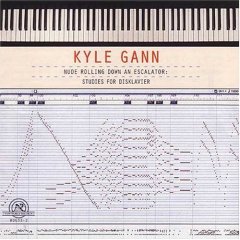 Nude Rolling Down an Escalator (New World 80633-2)
Nude Rolling Down an Escalator (New World 80633-2)
Contains:
Texarkana
Nude Rolling Down an Escalator
Petty Larceny
Bud Ran Back Out
Cosmic Boogie-Woogie
Despotic Waltz
Folk Dance for Henry Cowell
The Waiting
Tango da Chiesa
Unquiet Night
 [T]his CD is exhilarating, blowing apart preconceptions with such good-natured devilishness
that the only response is a kind of horrified awe. The compositions are all studies in rhythm, counterpoint and style.
Jazz musicians simply must hear Texarkana and Bud Ran Back Out. The former is a rag gone haywire,
churning with supreme nonchalance under the disquieting tyranny of a 29 to 13 polyrhythm. The latter is an astounding
tribute to Bud Powell. (It's troubling how a classical composer glosses the Powell style so well, but Gann did study
with an excellent jazz pianist, John Esposito.) Cosmic Boogie-Woogie is an exotic scale layering exercise that
makes Lennie Tristano's Turkish Mambo seem naive, and the long, lovely Unquiet Night features
sophisticated harmony waxing and waning in polyrhythmic splendor. There are also maniacal Beethoven and Chopin
tributes that made me laugh out loud. Although it would be absurd to say any of this music swings or grooves in a
normal human sense, the endless manipulation of time gives the computer some remarkable depth of feeling (try
Tango Da Chiesa). The future beckons. - Ethan Iverson, on Do the Math
[T]his CD is exhilarating, blowing apart preconceptions with such good-natured devilishness
that the only response is a kind of horrified awe. The compositions are all studies in rhythm, counterpoint and style.
Jazz musicians simply must hear Texarkana and Bud Ran Back Out. The former is a rag gone haywire,
churning with supreme nonchalance under the disquieting tyranny of a 29 to 13 polyrhythm. The latter is an astounding
tribute to Bud Powell. (It's troubling how a classical composer glosses the Powell style so well, but Gann did study
with an excellent jazz pianist, John Esposito.) Cosmic Boogie-Woogie is an exotic scale layering exercise that
makes Lennie Tristano's Turkish Mambo seem naive, and the long, lovely Unquiet Night features
sophisticated harmony waxing and waning in polyrhythmic splendor. There are also maniacal Beethoven and Chopin
tributes that made me laugh out loud. Although it would be absurd to say any of this music swings or grooves in a
normal human sense, the endless manipulation of time gives the computer some remarkable depth of feeling (try
Tango Da Chiesa). The future beckons. - Ethan Iverson, on Do the Math
 "Gann brilliantly deconstructs familiar genres like ragtime, boogie-woogie, bop and
Tex-Mex and reassembles the pieces in ways that are both achingly familiar and completely new, popular and avant garde,
steady and revolutionary, experimental and polished. The combination of microtonal tunings and populist roots
gives his music a sound that is simultaneously fresh and nostalgic and completely unlike that of anyone else
writing today." - Jerry Bowles, Sequenza21
"Gann brilliantly deconstructs familiar genres like ragtime, boogie-woogie, bop and
Tex-Mex and reassembles the pieces in ways that are both achingly familiar and completely new, popular and avant garde,
steady and revolutionary, experimental and polished. The combination of microtonal tunings and populist roots
gives his music a sound that is simultaneously fresh and nostalgic and completely unlike that of anyone else
writing today." - Jerry Bowles, Sequenza21
 "Fans of Frank Zappa's Jazz From Hell should check this acoustic masterpiece out. - Art Gumm, Downtown Music Gallery Newsletter
"Fans of Frank Zappa's Jazz From Hell should check this acoustic masterpiece out. - Art Gumm, Downtown Music Gallery Newsletter
 Top ten list - Sam Prestianni, Jazziz magazine, Jan./Feb. 2007
Top ten list - Sam Prestianni, Jazziz magazine, Jan./Feb. 2007
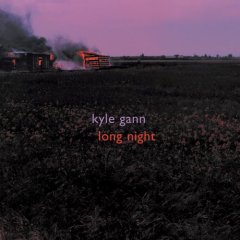 Long Night performed by pianist Sarah Cahill (Cold Blue CB0019)
Long Night performed by pianist Sarah Cahill (Cold Blue CB0019)
 "In one 25-minute exhalation, Long Night never strays very far from its quiet, resigned opening. As it progresses, single notes gather together and build into entrancing patterns. Brief lines begin only to be folded into others, then reappear on another of the three pianos. Many of these phrases bounce slowly from piano to piano, slightly out of synch with each other and overlapping like little, cushioned waves. Even when he starts up a section with more of a pulse it's way over on the subtle side. By the end, all of these slow-moving lines are crossing over, above and around each other, making a soothing mix. Bay-Area pianist and new-music heroine Sarah Cahill gives a thoughtful reading to the piece, never hurrying, always relaxed and placing the notes into the air ever so slightly, often sounding like she's off in Keith Jarrett-improvisation-land. The gorgeous sonics make clear which piano she's playing, and if this is a long night, let it go on and on." -- Marc Geelhoed, TimeOut Chicago
"In one 25-minute exhalation, Long Night never strays very far from its quiet, resigned opening. As it progresses, single notes gather together and build into entrancing patterns. Brief lines begin only to be folded into others, then reappear on another of the three pianos. Many of these phrases bounce slowly from piano to piano, slightly out of synch with each other and overlapping like little, cushioned waves. Even when he starts up a section with more of a pulse it's way over on the subtle side. By the end, all of these slow-moving lines are crossing over, above and around each other, making a soothing mix. Bay-Area pianist and new-music heroine Sarah Cahill gives a thoughtful reading to the piece, never hurrying, always relaxed and placing the notes into the air ever so slightly, often sounding like she's off in Keith Jarrett-improvisation-land. The gorgeous sonics make clear which piano she's playing, and if this is a long night, let it go on and on." -- Marc Geelhoed, TimeOut Chicago
 "Pianist Susan Cahill performs the three looping parts of the drifting, 25-minute Long Night (for three pianos) by composer, author, and critic Kyle Gann with elegance and control. Ruminative and impressionistic, the pianos sometimes play independently and at other times synchronize with one another. Heavily influenced during the compositional process by German philosopher Martin Heidegger, specifically his rejection of the idea of personality as a unified, linear consciousness, Gann's work likewise presents a series of moods in 'overlapping discontinuity.' Occasionally the pianos cluster into dense pools while at other times singular lines briefly rise to the surface." -- Ron Schepper, Signal to Noise (summer '05), Textura (May '05)
"Pianist Susan Cahill performs the three looping parts of the drifting, 25-minute Long Night (for three pianos) by composer, author, and critic Kyle Gann with elegance and control. Ruminative and impressionistic, the pianos sometimes play independently and at other times synchronize with one another. Heavily influenced during the compositional process by German philosopher Martin Heidegger, specifically his rejection of the idea of personality as a unified, linear consciousness, Gann's work likewise presents a series of moods in 'overlapping discontinuity.' Occasionally the pianos cluster into dense pools while at other times singular lines briefly rise to the surface." -- Ron Schepper, Signal to Noise (summer '05), Textura (May '05)
 "I played this piece maybe five times in a row last evening. Every time when it was over, I turned it back on . . . the gentle sounds just filled the early evening beautifully. The sun was disappearing and the night was slowly coming, with a nice spring air filling and mixing the room with this music." -- Frans de Waard, Vital Weekly (The Netherlands)
"I played this piece maybe five times in a row last evening. Every time when it was over, I turned it back on . . . the gentle sounds just filled the early evening beautifully. The sun was disappearing and the night was slowly coming, with a nice spring air filling and mixing the room with this music." -- Frans de Waard, Vital Weekly (The Netherlands)
 "Even when the ambience seems to be delicate on the first listen, that's only an illusion. There is depth and gorgeous hidden treasures . . . each piano is heard in crystalline fashion. The repetitiveness of the piece itself is hauntingly mesmerizing and draws you in immediately." -- Tom Sekowski, Gaz-Eta (Poland)
"Even when the ambience seems to be delicate on the first listen, that's only an illusion. There is depth and gorgeous hidden treasures . . . each piano is heard in crystalline fashion. The repetitiveness of the piece itself is hauntingly mesmerizing and draws you in immediately." -- Tom Sekowski, Gaz-Eta (Poland)
 "Pianist Sarah Cahill plays all the three different overlapping manual loops that form the tranquilising architecture of Kyle Gann's "Long Night". Although the music is absolutely not intricate (it works wonders as a source of relaxation while you're immersed in different activities Ð wasn't that the very concept of "ambient music"?), the cross between the casual intersections of modulating chords and the Satiesque peacefulness of Cahill's keyboard painting, with its beautiful natural resonance, is complex enough to substantiate the creative effort and imagination Gann has put into the work. The thin air moves in and around this mature evocation of events definitively entrapped in a past from where they can no longer return; just being able to have a peek at them through this ancient looking glass brings long nights of aural fascination. -- Massimo Ricci, Paris Transatlantic
"Pianist Sarah Cahill plays all the three different overlapping manual loops that form the tranquilising architecture of Kyle Gann's "Long Night". Although the music is absolutely not intricate (it works wonders as a source of relaxation while you're immersed in different activities Ð wasn't that the very concept of "ambient music"?), the cross between the casual intersections of modulating chords and the Satiesque peacefulness of Cahill's keyboard painting, with its beautiful natural resonance, is complex enough to substantiate the creative effort and imagination Gann has put into the work. The thin air moves in and around this mature evocation of events definitively entrapped in a past from where they can no longer return; just being able to have a peek at them through this ancient looking glass brings long nights of aural fascination. -- Massimo Ricci, Paris Transatlantic
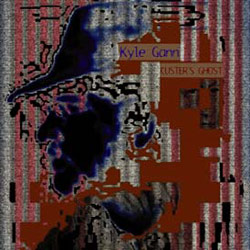 Custer's Ghost: The Electronic Music of Kyle Gann (Monroe Street msm 60104)
Custer's Ghost: The Electronic Music of Kyle Gann (Monroe Street msm 60104)
Contains:
Fractured Paradise
How Miraculous Things Happen
Superparticular Woman
So Many Little Dyings
Ghost Town
Custer and Sitting Bull
 "Because just intonation sounds out of tune to listeners accustomed to Western musical practice, they may need a few minutes to adjust their ears to Gann's tunings. But the effort is worth it - beneath the piece's shiny surfaces is real gold, the kind that makes us want to listen again and again.... Surely those are triads, and yet not quite major or minor ones, but somewhere in between. Rhythms that initially seem to be quarter and eighth notes refuse to come out squarely on the beat. The pulse seems steady at first, until you try to tap. Do we have one foot too many or too few?.... Custer and Sitting Bull... is as disturbing as any musical-political work in recent memory, for its riveting emotional portrayal of Custer, Sitting Bull, and the events surrounding them." Noah Creshevsky, Institute for Studies in American Music Newsletter
"Because just intonation sounds out of tune to listeners accustomed to Western musical practice, they may need a few minutes to adjust their ears to Gann's tunings. But the effort is worth it - beneath the piece's shiny surfaces is real gold, the kind that makes us want to listen again and again.... Surely those are triads, and yet not quite major or minor ones, but somewhere in between. Rhythms that initially seem to be quarter and eighth notes refuse to come out squarely on the beat. The pulse seems steady at first, until you try to tap. Do we have one foot too many or too few?.... Custer and Sitting Bull... is as disturbing as any musical-political work in recent memory, for its riveting emotional portrayal of Custer, Sitting Bull, and the events surrounding them." Noah Creshevsky, Institute for Studies in American Music Newsletter
 Other Places by pianist Lois Svard (Lovely Music LCD 3052)
Other Places by pianist Lois Svard (Lovely Music LCD 3052)
Contains:
Desert Sonata by Kyle Gann
Variations on the Orange Cycle by Elodie Lauten
Trapani Stream by Jerry Hunt
 "Here we have a wonderfully inventive, two-movement work with a grand architecture, sweeping gestures, and a direct appeal to a tradition.... The piece incorporates fiendishly difficult rhythmic relations derived from the music of Conlon Nancarrow, a poetic ambience related to the Southwestern 'desert music' of Peter Garland, and a harmonic practice that is able to accept Native American hymn tunes (as Ives did the Protestant music of his upbringing; this sonata's second movement made me think of 'Thoreau' from the Concord Sonata).... The tornado of a 41/16 passacaglia that ends the first movement is a wonder to behold.... a major contribution to the piano literature." Robert Carl, Fanfare Magazine
"Here we have a wonderfully inventive, two-movement work with a grand architecture, sweeping gestures, and a direct appeal to a tradition.... The piece incorporates fiendishly difficult rhythmic relations derived from the music of Conlon Nancarrow, a poetic ambience related to the Southwestern 'desert music' of Peter Garland, and a harmonic practice that is able to accept Native American hymn tunes (as Ives did the Protestant music of his upbringing; this sonata's second movement made me think of 'Thoreau' from the Concord Sonata).... The tornado of a 41/16 passacaglia that ends the first movement is a wonder to behold.... a major contribution to the piano literature." Robert Carl, Fanfare Magazine
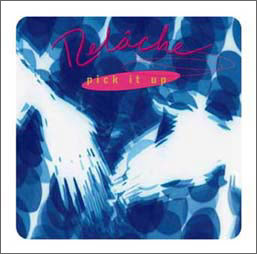 Pick It Up by the Relache Ensemble (Monroe Street msm 60102)
Pick It Up by the Relache Ensemble (Monroe Street msm 60102)
Contains:
Hesapa ki Lakhota ki Thawapi by Kyle Gann
HRT by Michael Nyman,
Octeto Malandro by Arturo Marquez
Paramell VI by Stephen Montague
 "Kyle Gann's Native American homage 'Hesapa ki Lakhota ki Thawapi' ('The Black Hills Belong to the Sioux') is almost too gorgeous for its own good, but is saved from new age vacuousness by an underlying sadness and an intriguing structural complexity...." Bill Tilland, Option
"Kyle Gann's Native American homage 'Hesapa ki Lakhota ki Thawapi' ('The Black Hills Belong to the Sioux') is almost too gorgeous for its own good, but is saved from new age vacuousness by an underlying sadness and an intriguing structural complexity...." Bill Tilland, Option
 "A diverse and intriguing assembly of four primarily melodic compositions for chamber orchestra by different composers: Kyle Gann's "Hesapa Ki Lakhota Ki Thawapi (The Black Hills Belong to the Sioux)" (1984-89) is constructed of several beautiful countrapuntal melodies played against a steady drum beat -- rhythmic units are selectively removed from the overall 12/8 feel (which the composer likens metaphorically to parts of the land being steadily stolen from the Native Americans) resulting in "nervous and fragmented" (Gann) continuity...." "Blue" Gene Tyranny, All Music Guide
"A diverse and intriguing assembly of four primarily melodic compositions for chamber orchestra by different composers: Kyle Gann's "Hesapa Ki Lakhota Ki Thawapi (The Black Hills Belong to the Sioux)" (1984-89) is constructed of several beautiful countrapuntal melodies played against a steady drum beat -- rhythmic units are selectively removed from the overall 12/8 feel (which the composer likens metaphorically to parts of the land being steadily stolen from the Native Americans) resulting in "nervous and fragmented" (Gann) continuity...." "Blue" Gene Tyranny, All Music Guide
 Ten Years of Essential Music (Monroe Street msm 60101)
Ten Years of Essential Music (Monroe Street msm 60101)
Contains:
Snake Dance No. 2 by Kyle Gann
works by Johanna M. Beyer, Robert Ashley, Peter Garland, John Kennedy, Christian Wolff, Malcolm Goldstein, and Charles Wood
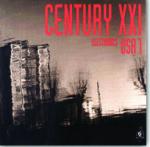 Century XXI (New Tone nt6730)
Century XXI (New Tone nt6730)
Contains:
Ghost Town by Kyle Gann
works by Carl Stone, Ben Neill, Mikel Rouse, Nicolas Collins
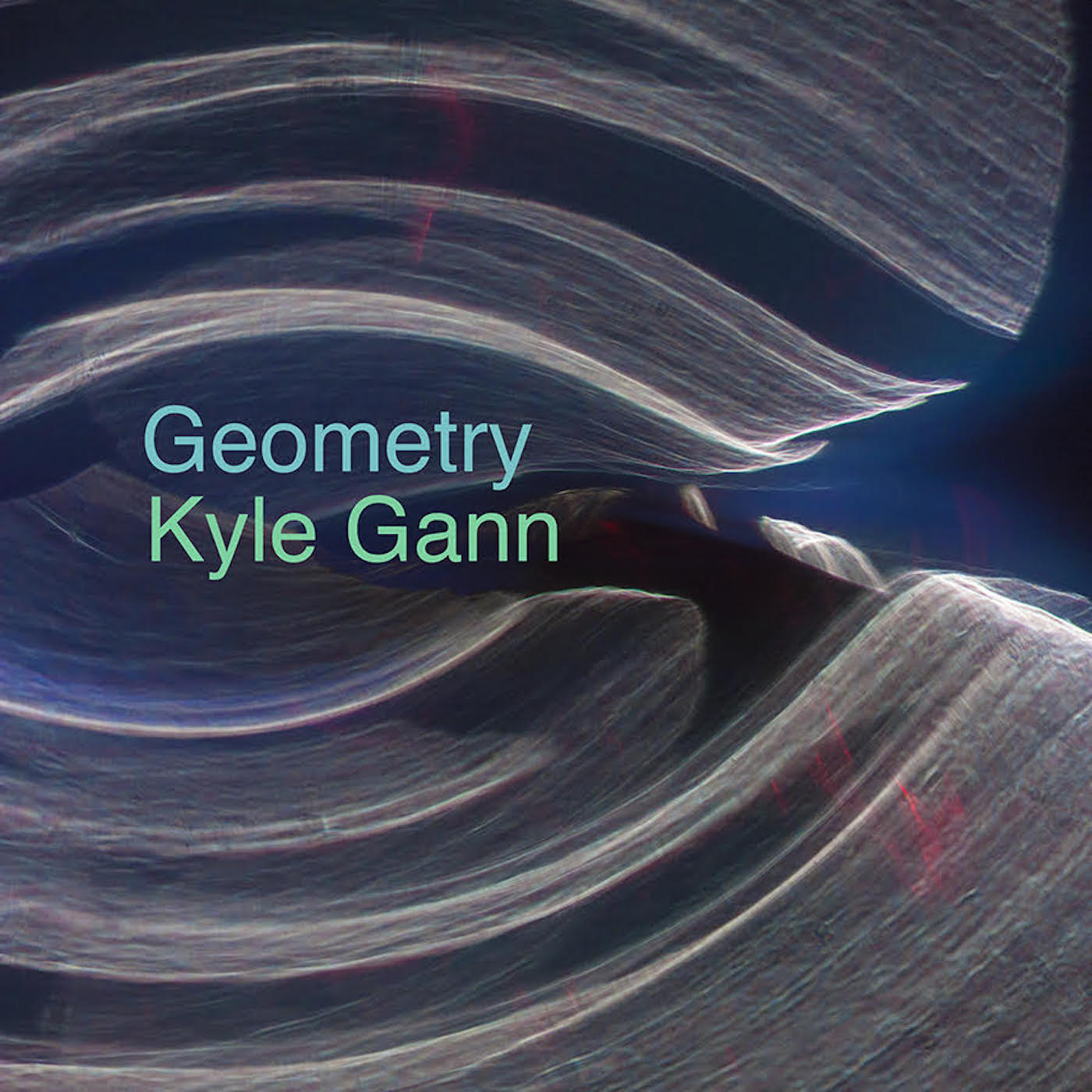
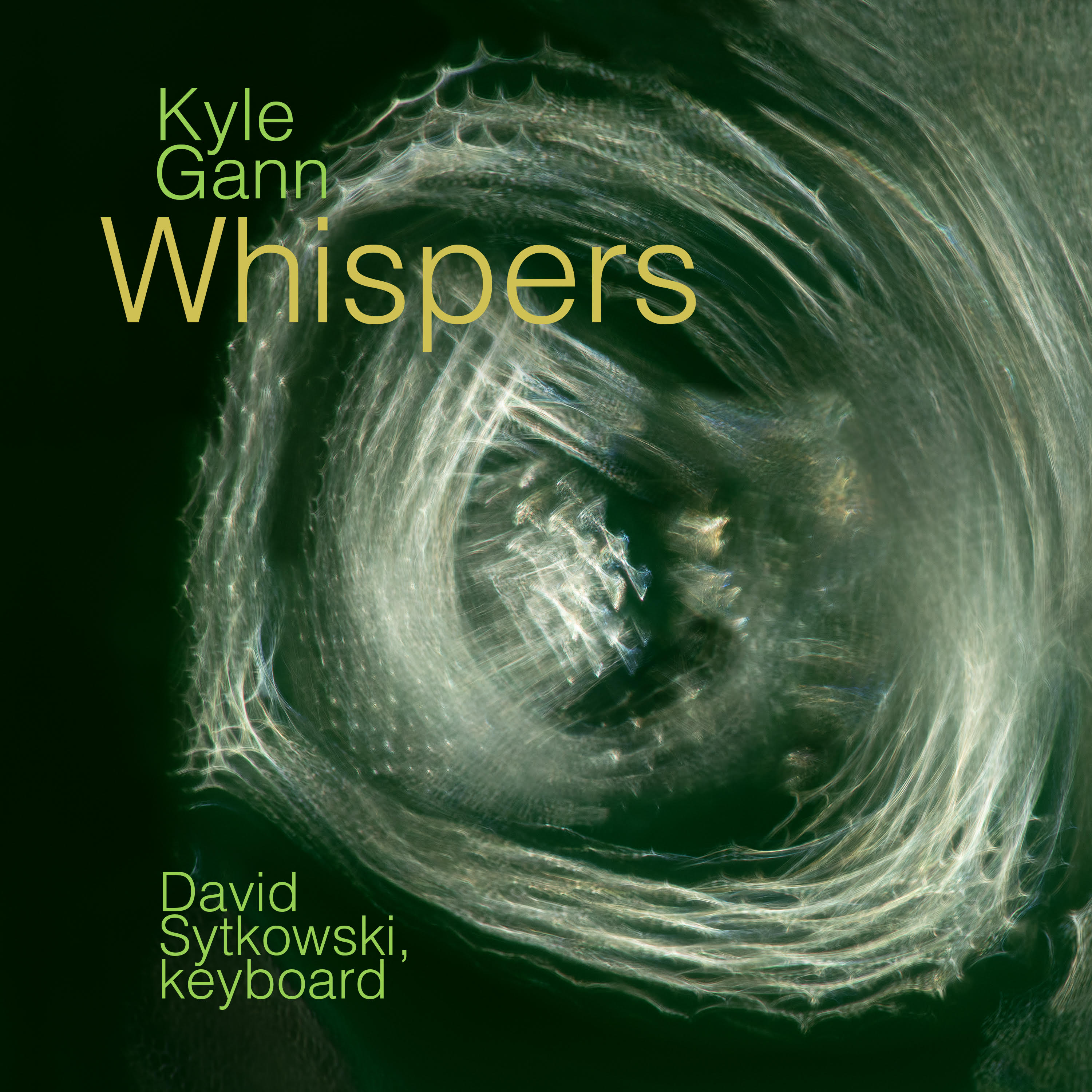

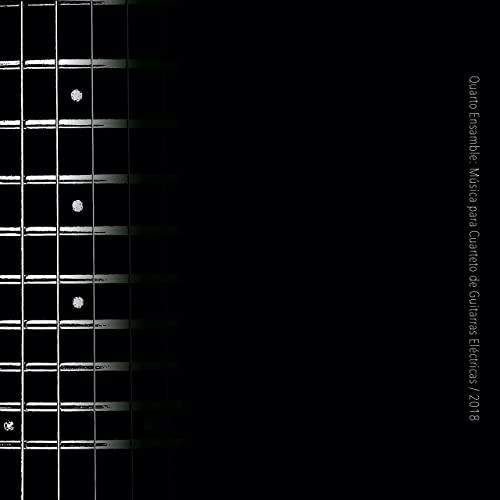





















 "Hyperchromatica is an epic undertaking... Realized by three retuned, computer driven
pianos, this cycle spans more than two and a half hours, although time itself
seems to lurch into an intoxicated reel as glinting microtones teem and teeter woozily within its elastic measures.
In terms of ambition it might stand alongside Terry Riley's The Harp Of New Albion, La Monte Young's
The Well-Tuned Piano, even Conlon Nancarrow's magnificent player piano studies. Yet with his interlocking trio
of Disklaviers Gann has created something distinctive, aurally and conceptually cleansing, often startling and strange.
"Hyperchromatica is an epic undertaking... Realized by three retuned, computer driven
pianos, this cycle spans more than two and a half hours, although time itself
seems to lurch into an intoxicated reel as glinting microtones teem and teeter woozily within its elastic measures.
In terms of ambition it might stand alongside Terry Riley's The Harp Of New Albion, La Monte Young's
The Well-Tuned Piano, even Conlon Nancarrow's magnificent player piano studies. Yet with his interlocking trio
of Disklaviers Gann has created something distinctive, aurally and conceptually cleansing, often startling and strange.
